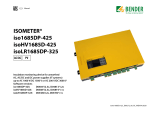
2.2.1 Base Address Table
The PC I/O port mapping is given below.
ADDRESS Device ADDRESS Device
000-1FF PC reserved 320-32F XT Hard Disk
200-20F Game/control 378-37F Parallel Printer
210-21F XT Expansion Unit 380-38F SDLC
238-23F Bus Mouse/Alt. Bus Mouse 3A0-3AF SDLC
278-27F Parallel Printer 3B0-3BF MDA/Parallel Printer
2B0-2DF EGA 3C0-3CF EGA
2E0-2E7 AT GPIB 3D0-3DF CGA
2E8-2EF Serial Port 3E8-3EF Serial Port
2F8-2FF Serial Port 3F0-3F7 Floppy Disk
300-31F Prototype Card 3F8-3FF Serial Port
Base Adders
1
A9
2
A8
3
A7
4
A6
5
A5
6
A4
200-20F OFF ON ON ON ON ON
210-21F OFF ON ON ON ON OFF
220-22F (*) OFF ON ON ON OFF ON
230-23F OFF ON ON ON OFF OFF
240-24F OFF ON ON OFF ON ON
250-25F OFF ON ON OFF ON OFF
260-26F OFF ON ON OFF OFF ON
270-27F OFF ON ON OFF OFF OFF
280-28F OFF ON OFF ON ON ON
290-29F OFF ON OFF ON ON OFF
2A0-2AF OFF ON OFF ON OFF ON
2B0-2BF OFF ON OFF ON OFF OFF
2C0-2CF OFF ON OFF OFF ON ON
2D0-2DF OFF ON OFF OFF ON OFF
2E0-2EF OFF ON OFF OFF OFF ON
2F0-2FF OFF ON OFF OFF OFF OFF
300-30F OFF OFF ON ON ON ON
310-31F OFF OFF ON ON ON OFF
320-32F OFF OFF ON ON OFF ON
330-33F OFF OFF ON ON OFF OFF
340-34F OFF OFF ON OFF ON ON
350-35F OFF OFF ON OFF ON OFF
360-36F OFF OFF ON OFF OFF ON
370-37F OFF OFF ON OFF OFF OFF
380-38F OFF OFF OFF ON ON ON
390-39F OFF OFF OFF ON ON OFF
3A0-3AF OFF OFF OFF ON OFF ON
3B0-3BF OFF OFF OFF ON OFF OFF
3C0-3CF OFF OFF OFF OFF ON ON
3D0-3DF OFF OFF OFF OFF ON OFF
3E0-3EF OFF OFF OFF OFF OFF ON
3F0-3FF OFF OFF OFF OFF OFF OFF
*
: Default base address
A-821PGL/PGH User’s Manual( Ver.2.5, Jun/2009, IMH-001-25 ) ---------9





















